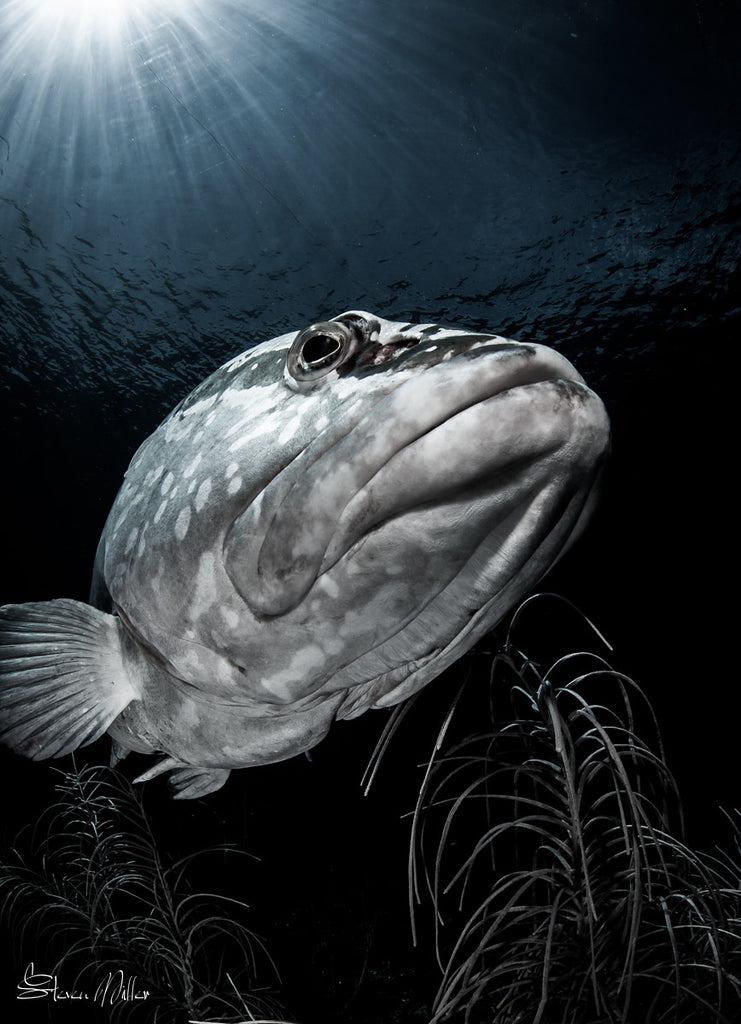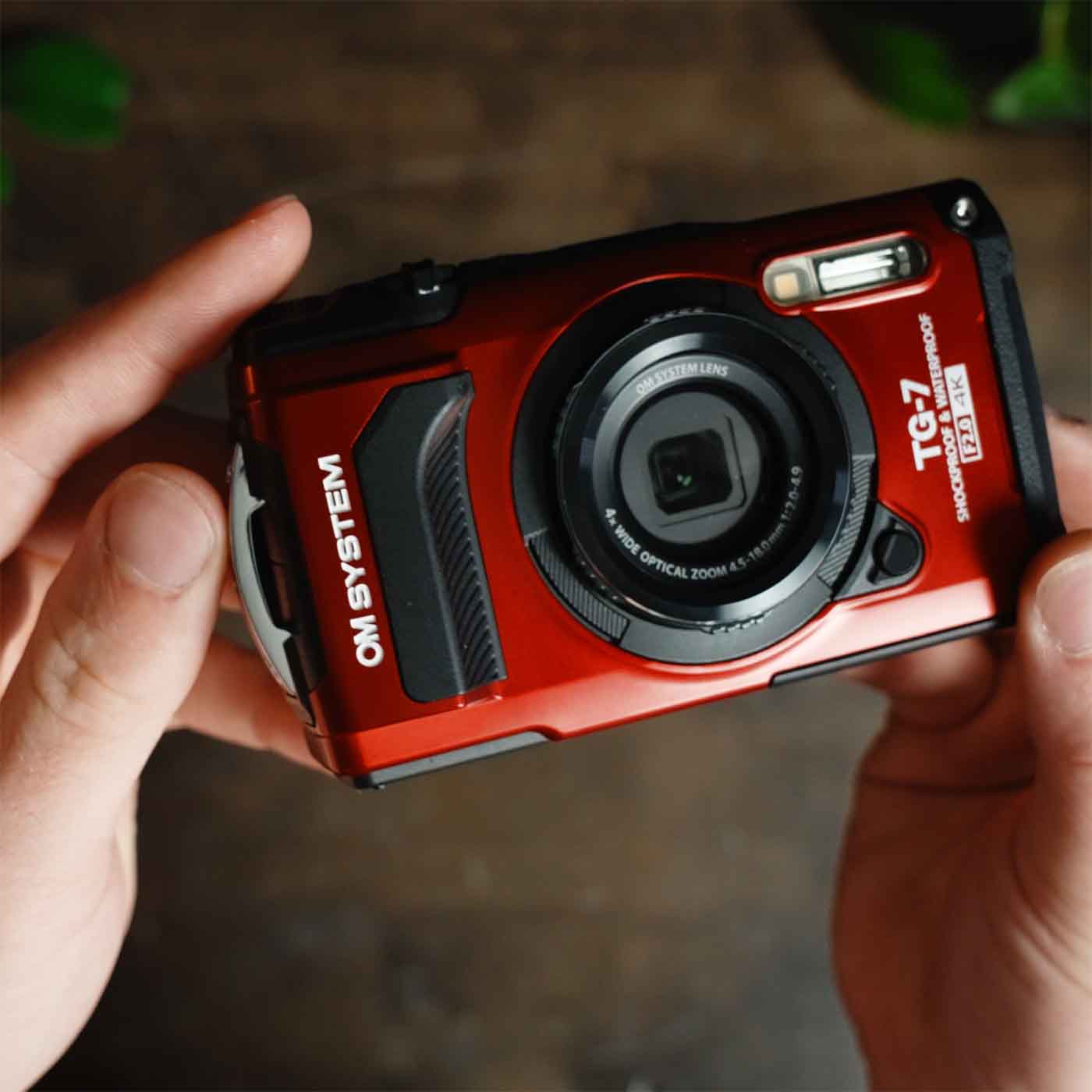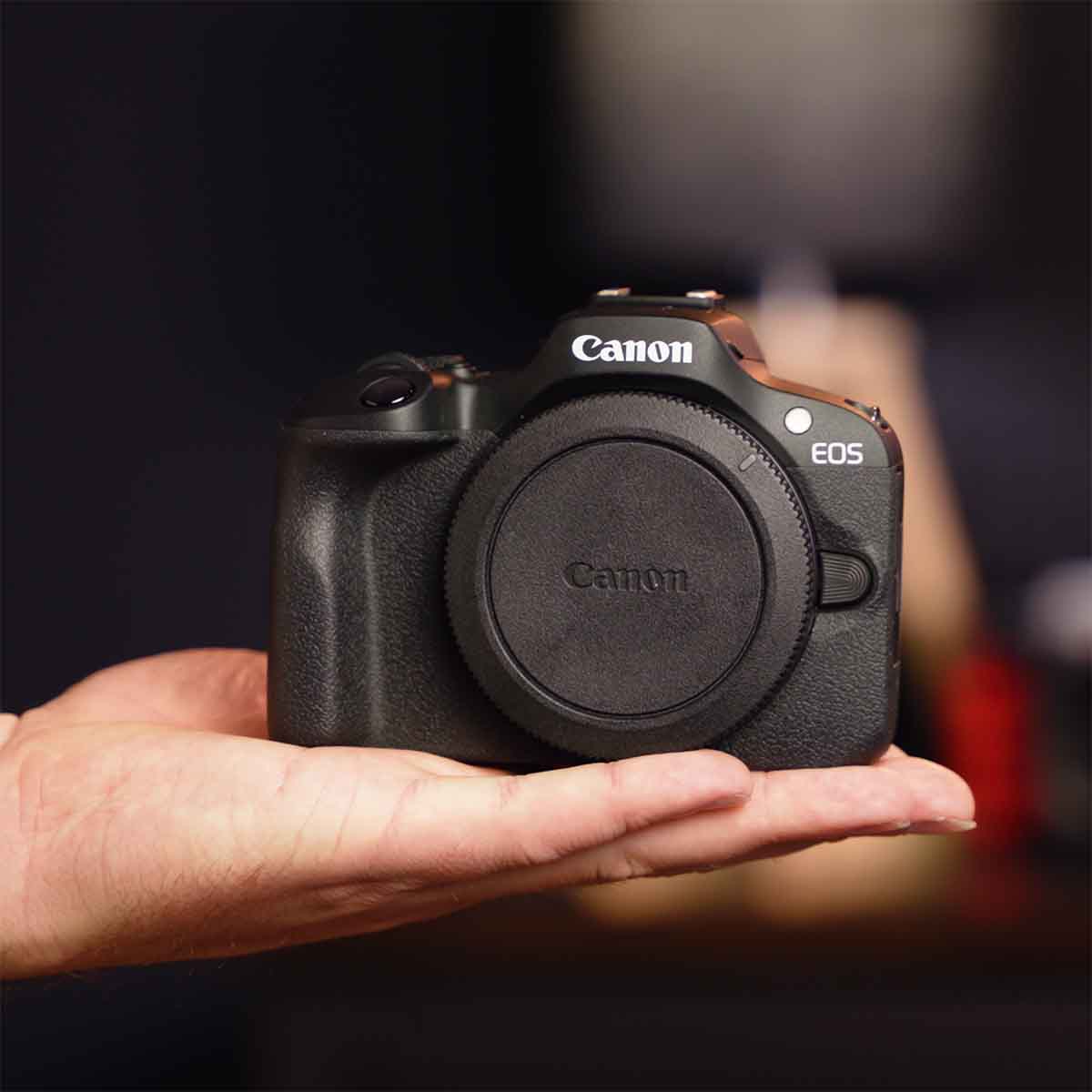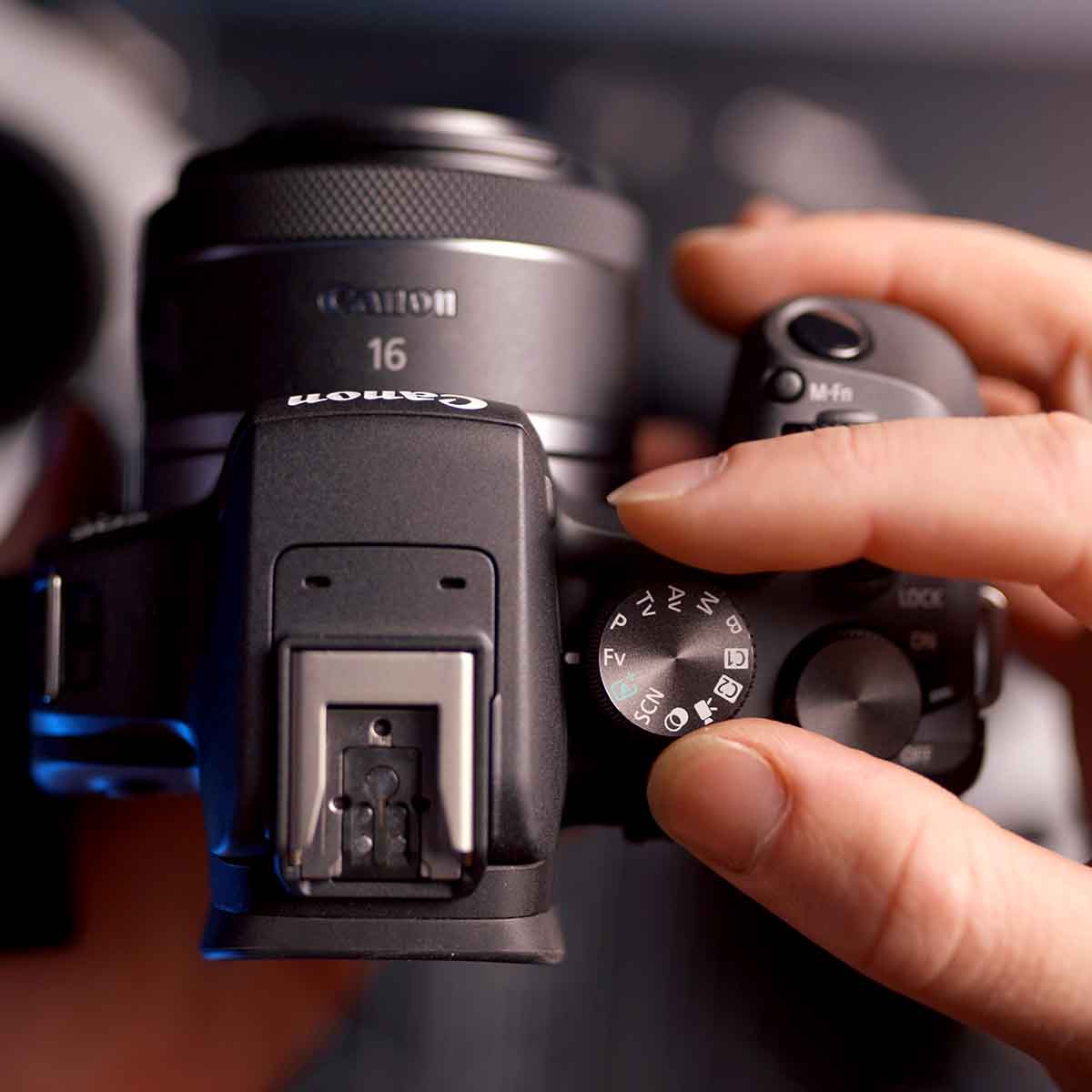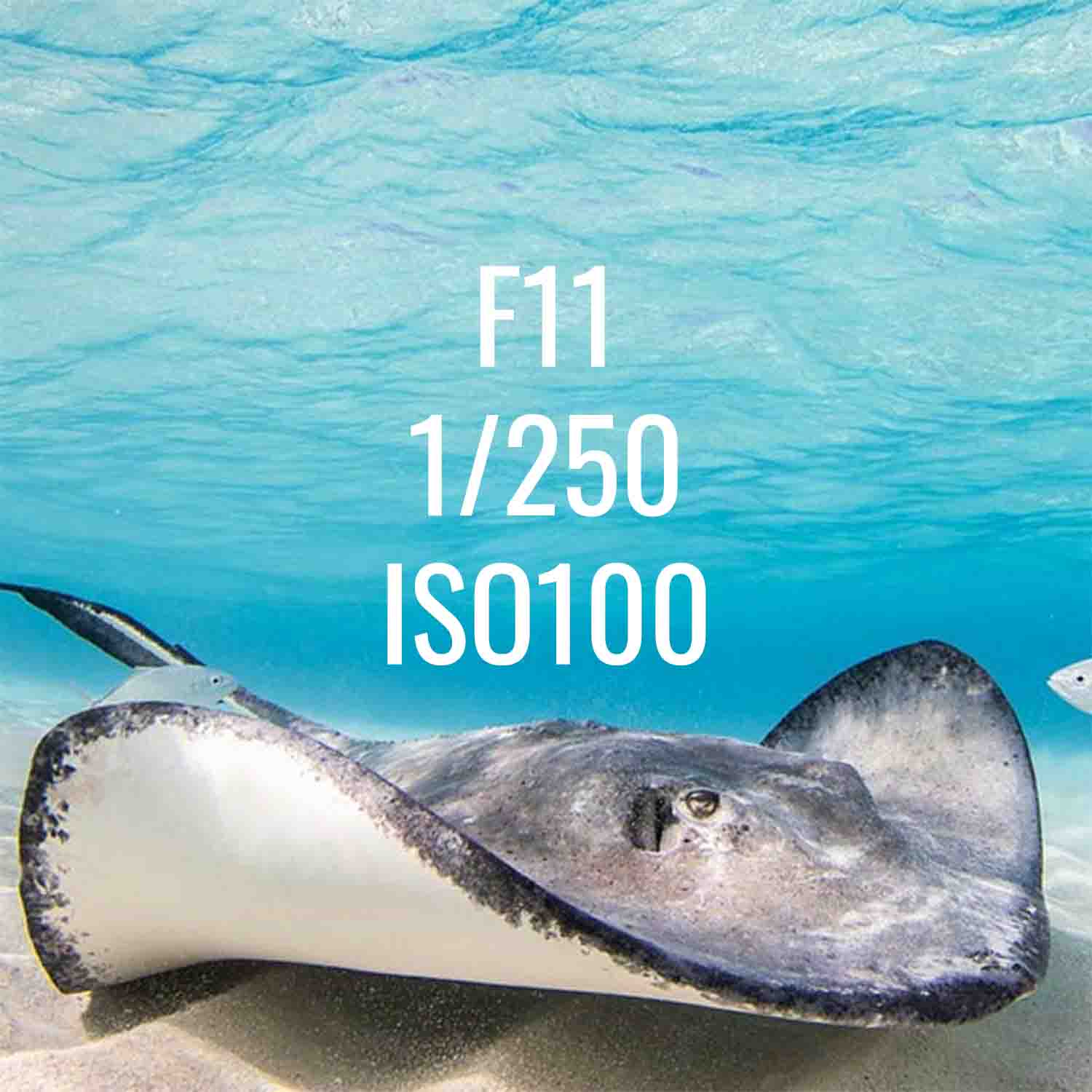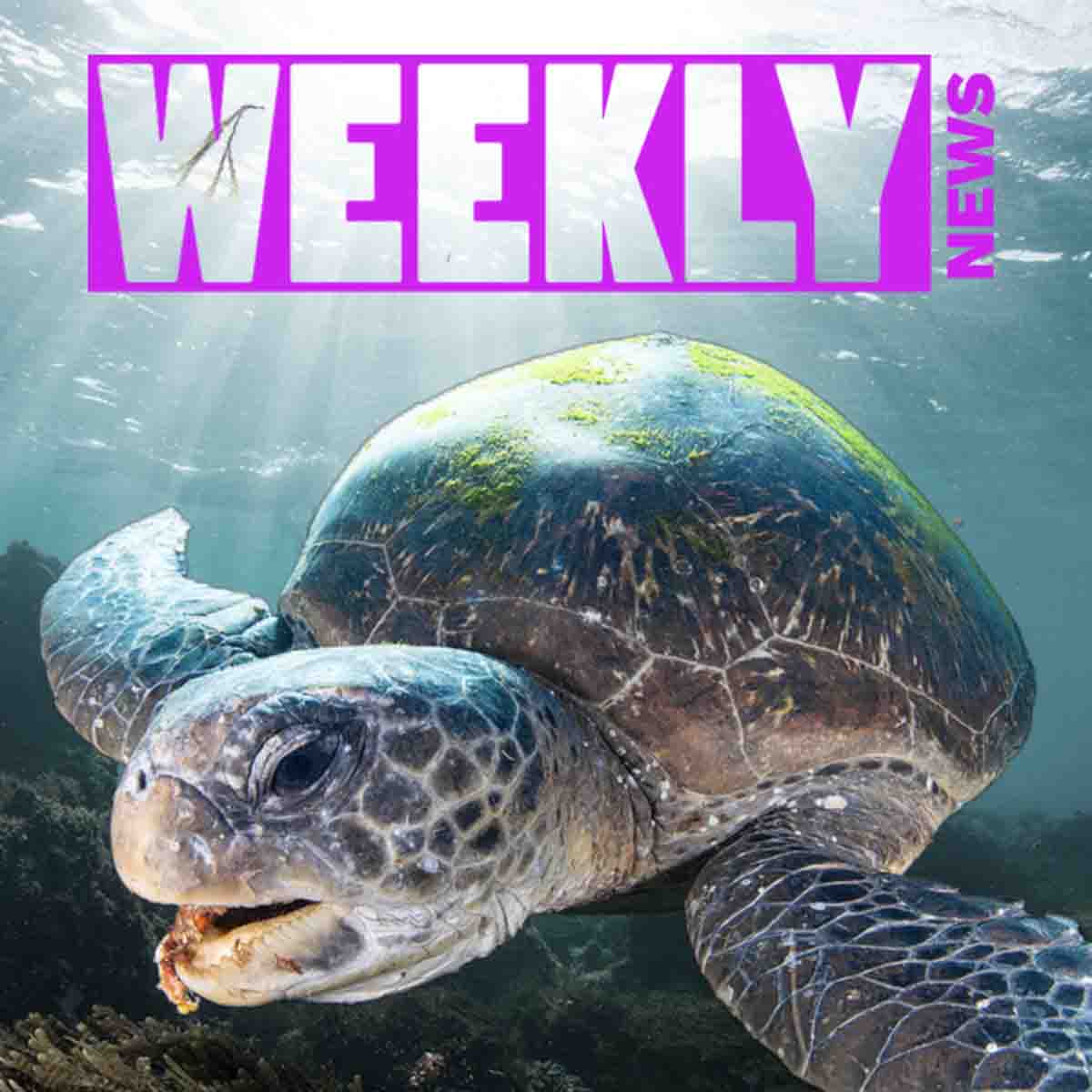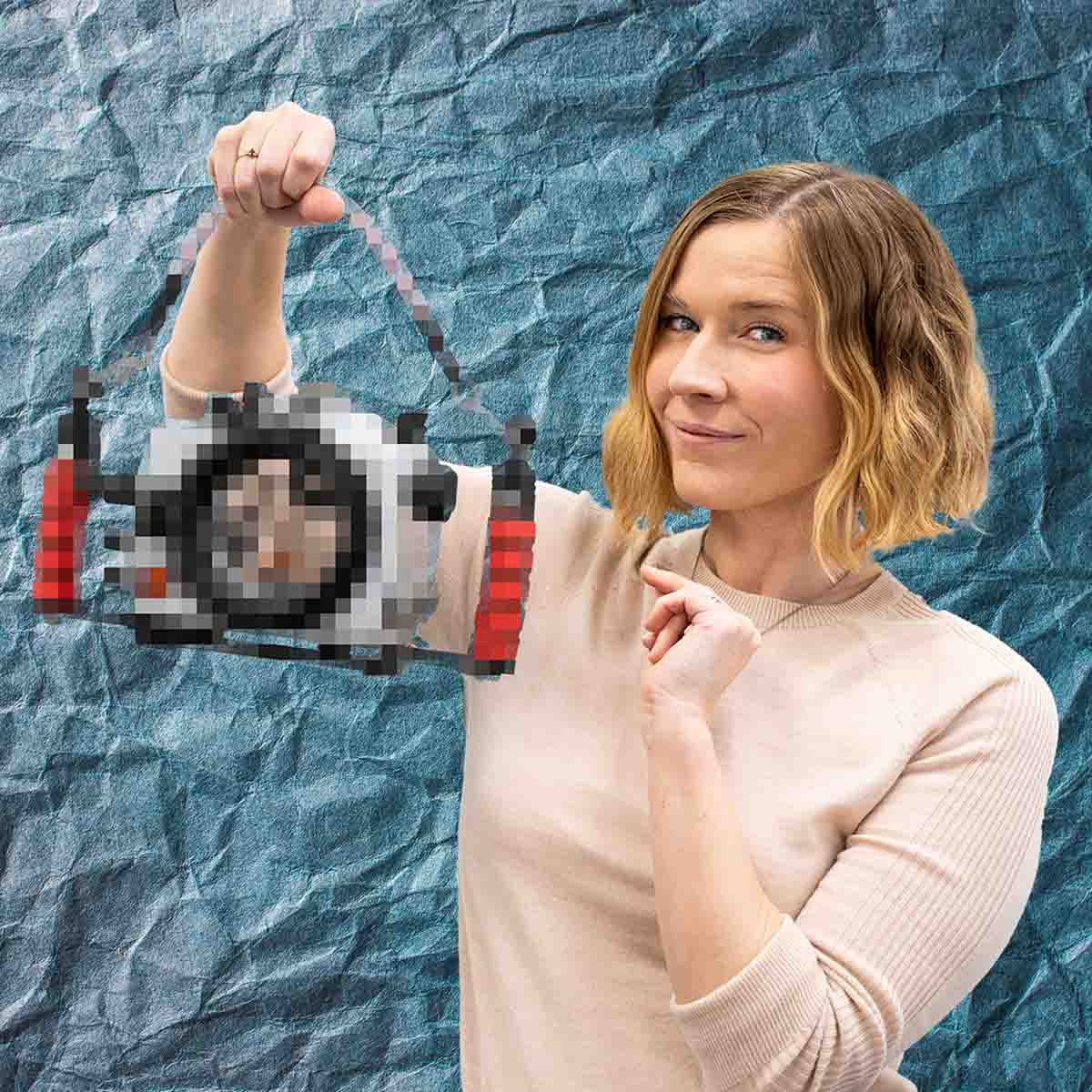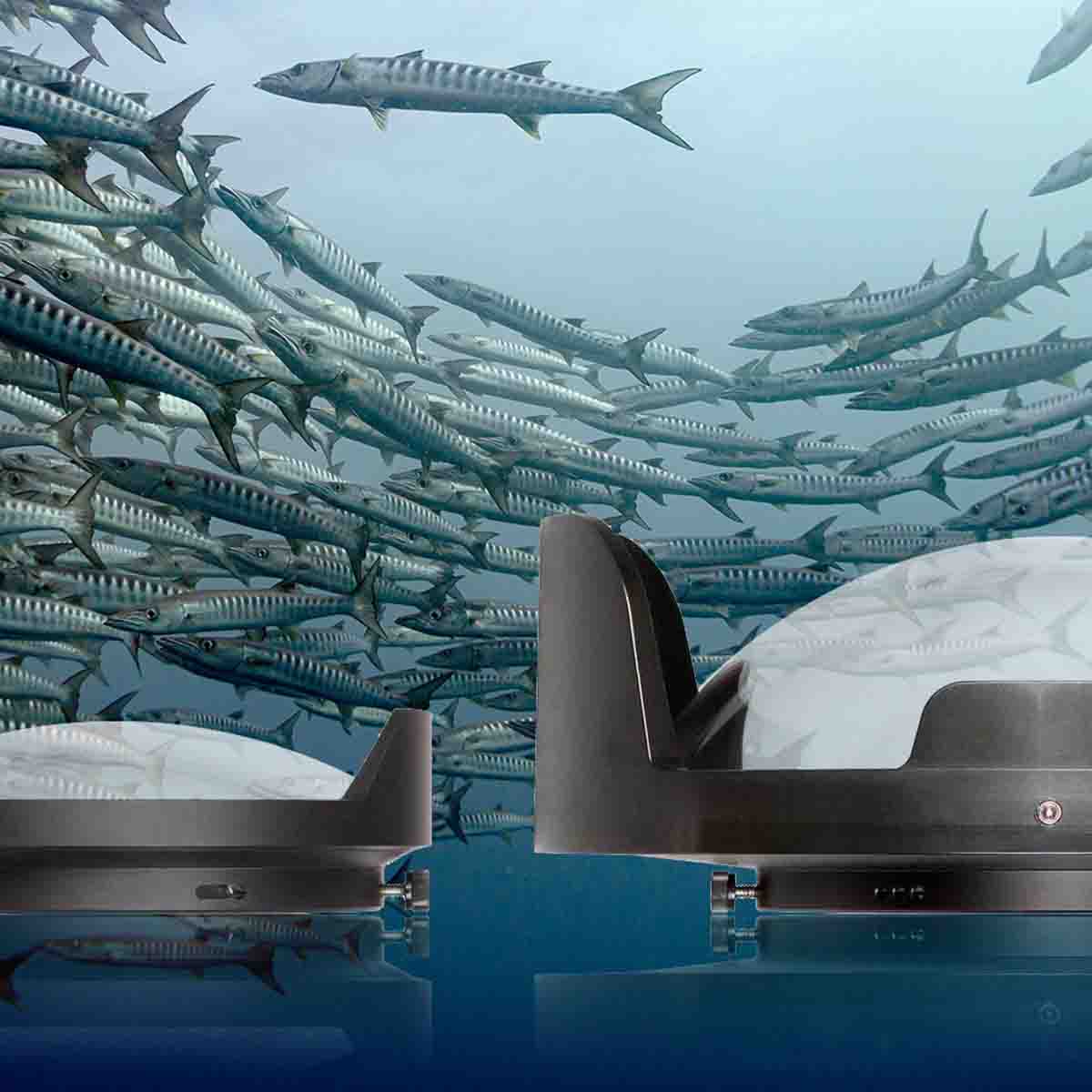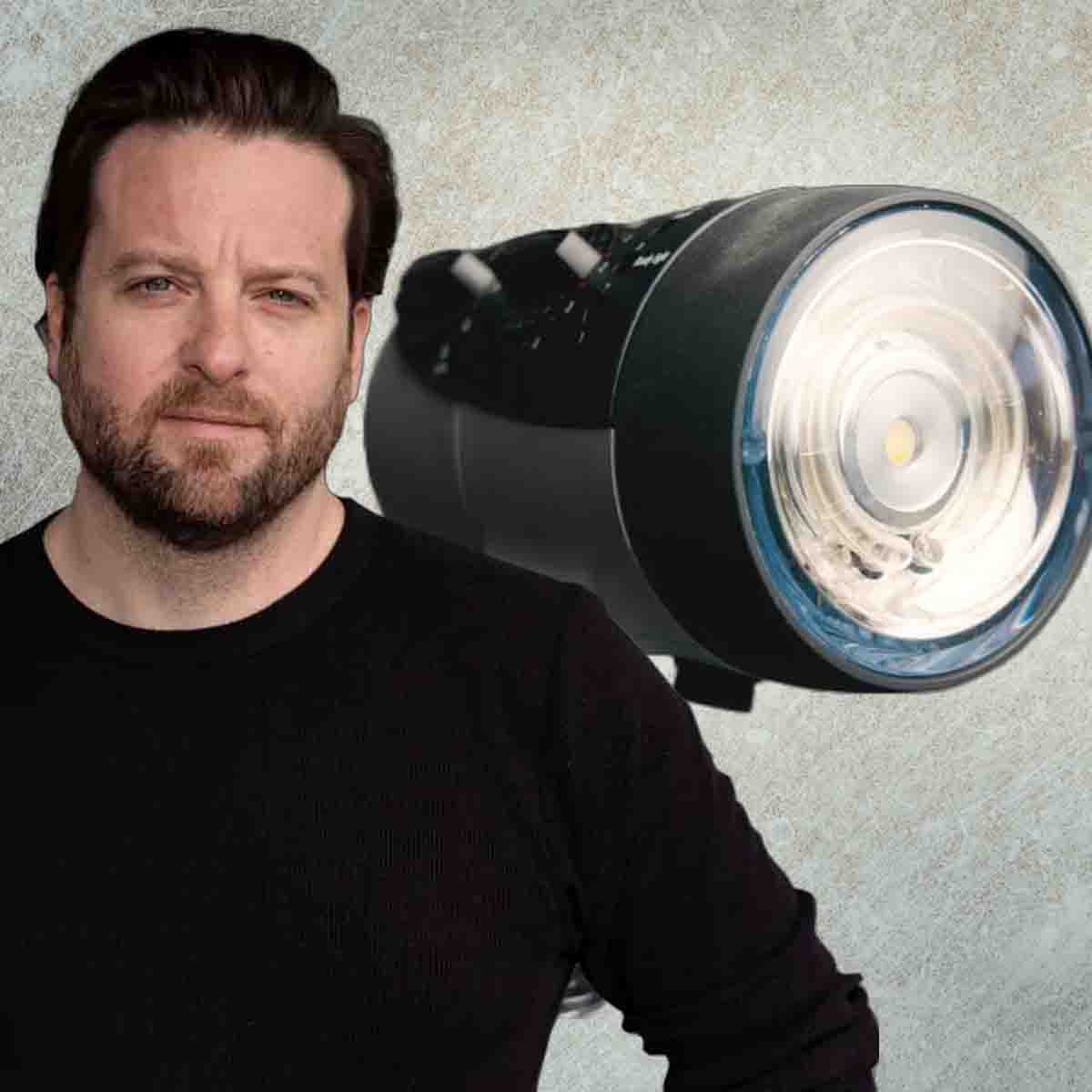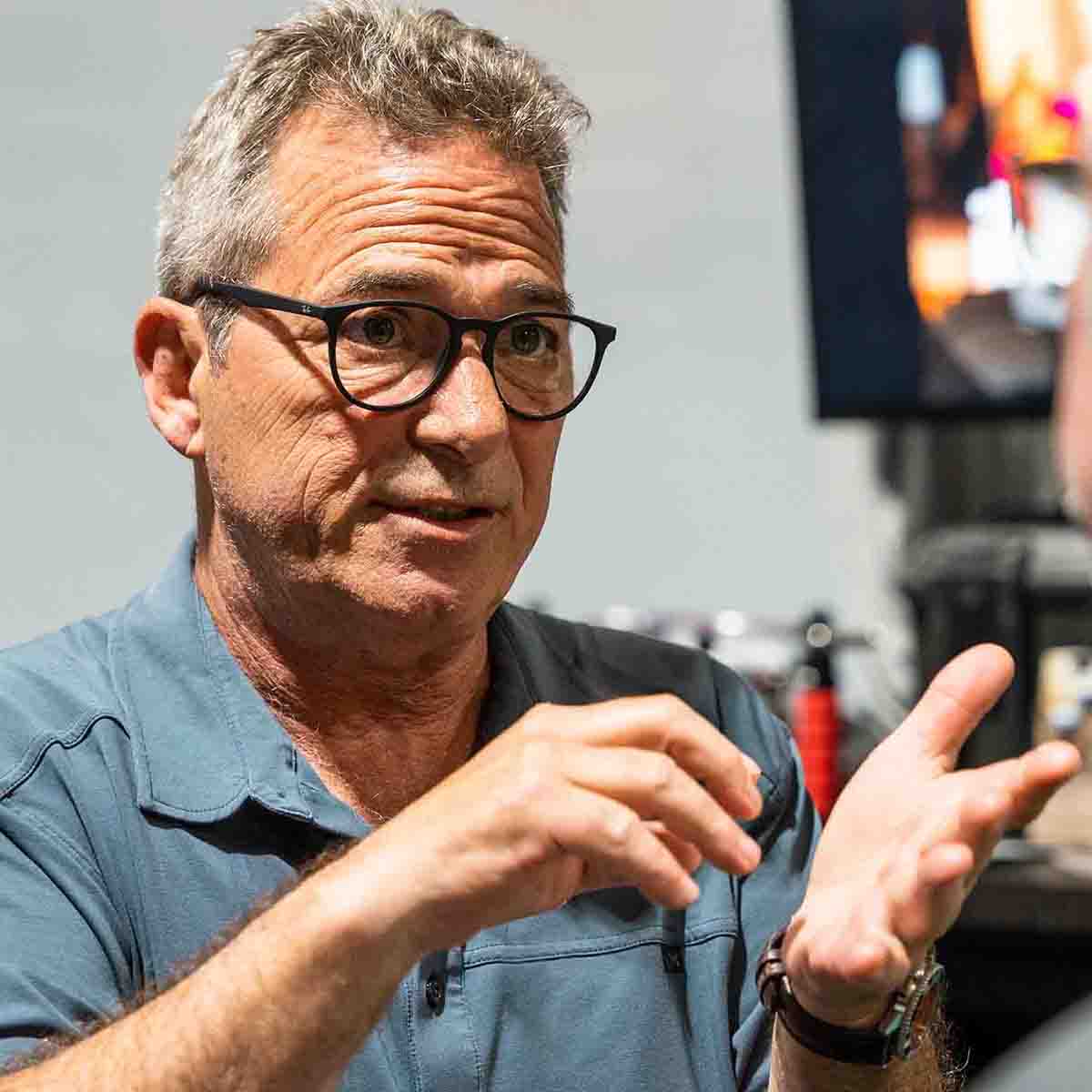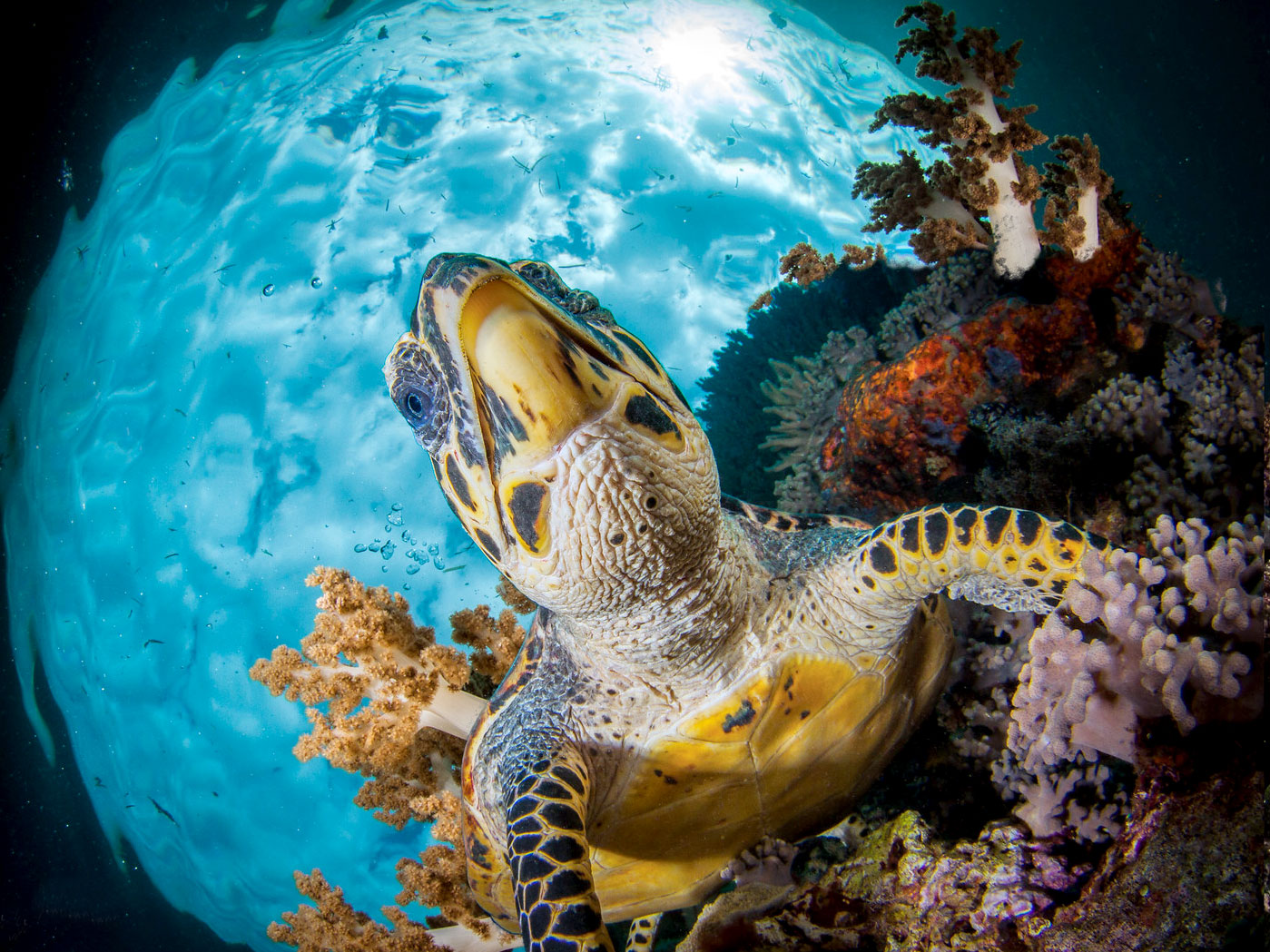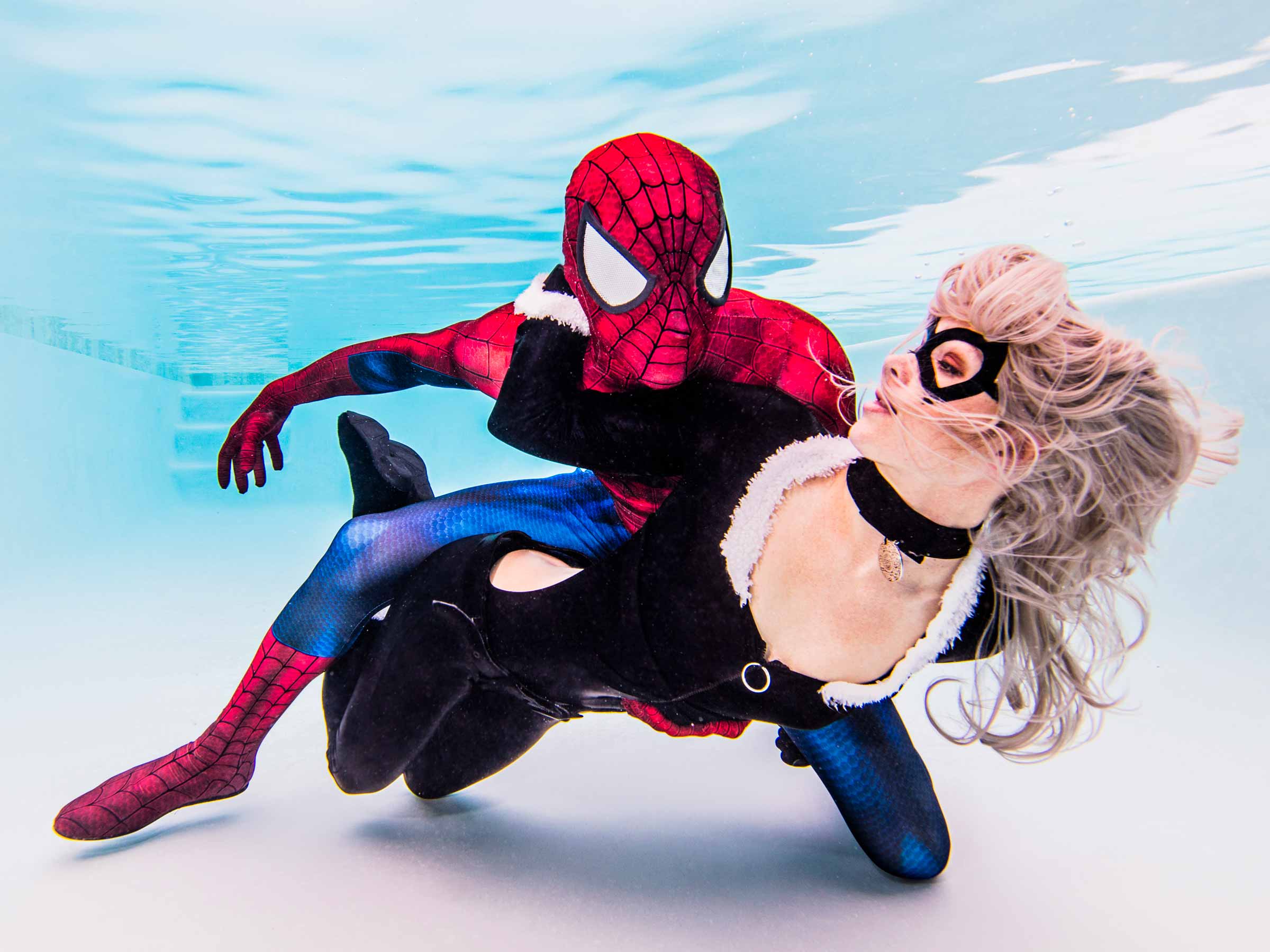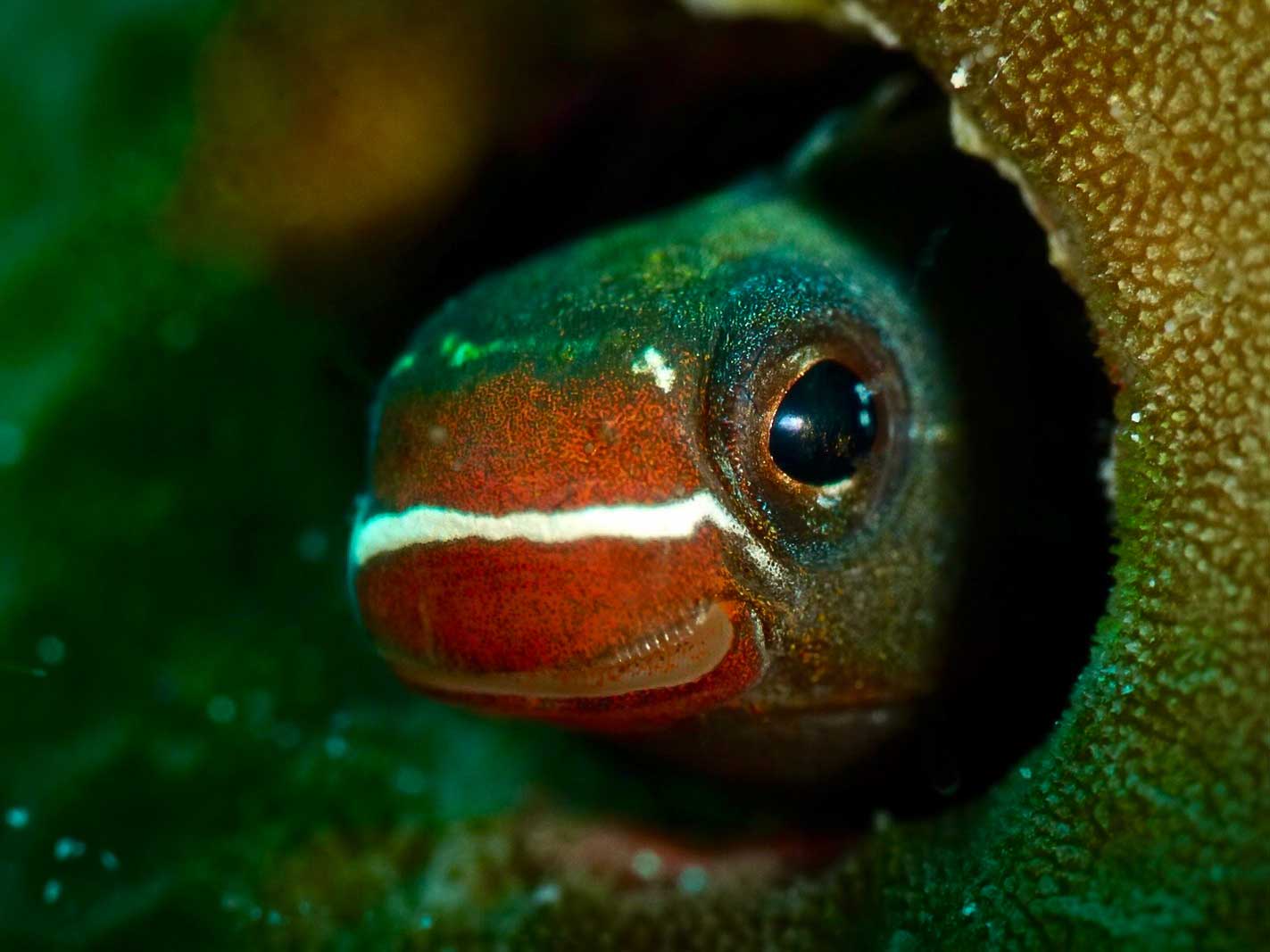Close focus wide angle (CFWA) is a classic technique that makes a huge impact on your underwater images. Let's talk about why and how!
The why is pretty simple... we are cheating the underwater visibility. Most of us consider 100 ft (30m) of visibility to be crystal clear. Being able to see something far away doesn't mean that it is sharp, or that you can capture intricate details when you photograph it.
This may be obvious for subjects that are 100 ft away, but what about 3 ft (1m), or 6 in (15cm)? Underwater there actually is a difference, and it is huge. Even in calm, tropical waters, the dense water column will gradually distort and dull your image. The effect increases with distance from your subject. This is the reason so many photographers shoot super wide lenses.
A wide angle lens (fisheye or rectilinear) makes a very close object look like it's a comfortable distance from you. This means that all of the water between you and your subject - and the cloudiness it carries - is reduced, resulting in a more crisp image. It also means your light travels a shorter distance as it reflects off of the subject and on to your sensor, resulting in a bigger pop of color.
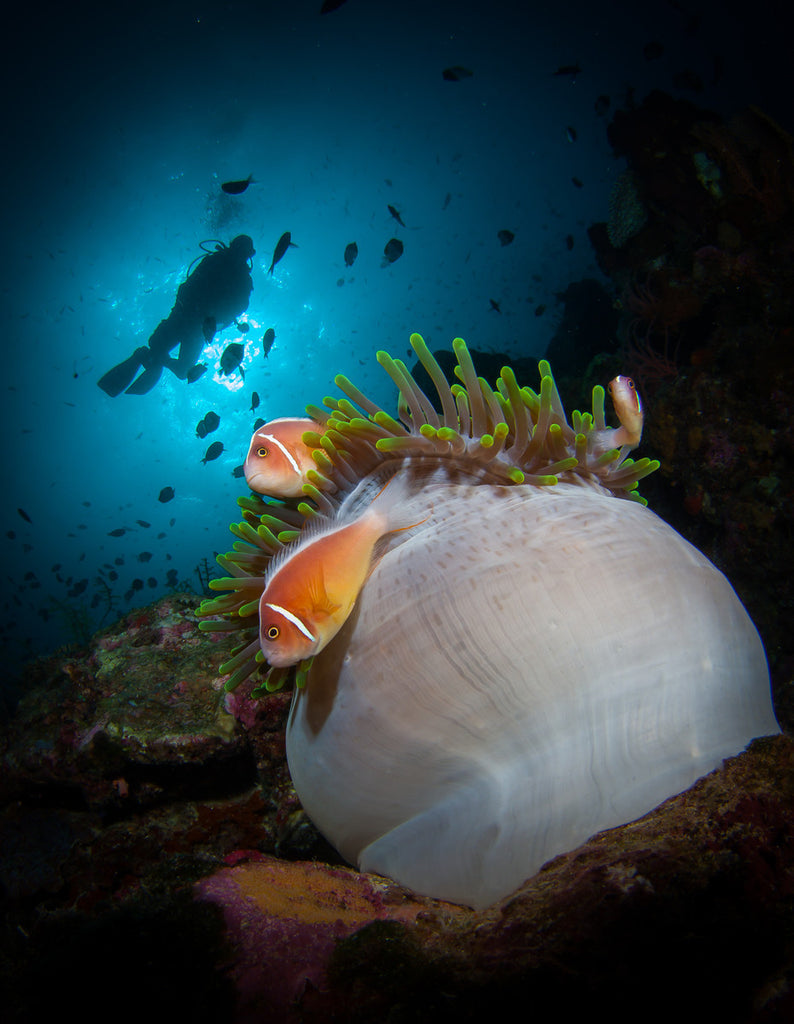
ISO 160 • f/20 • 1/160 • Tokina 10-17mm Fisheye at 10mm
There are no hard rules to shooting CFWA; this is art and different techniques come into play. The following method is time tested and has produced magazine cover shots from many photographers over the years. It is particularly effective when shooting a TTL strobe system.
Domes and Lenses
Both large and small domes can both produce CFWA images well. Big domes generally provide sharper images. Smaller domes can be an advantage because you can get a few inches closer to the subject.
The most important thing is to have a close focusing super wide angle lens. Our favorites are the Tokina 10-17mm Fisheye and either the Nikon or Canon 8-15mm Fisheye. These lenses are sharp and have an incredible depth of field, even at close distances. A better lens is more likely to improve your photos than a better camera. Professional photographers eat through camera bodies like candy, but a high quality lens can last a decade or more.
Shooting CFWA
The two things to keep in mind are that you want an upward camera angle, and that you want to carefully maneuver your dome port to be as close as is practical to your subject without touching it.
The exposure you select can vary depending on the desired effect. For tropical diving try setting a low ISO speed (ISO 200 or so) and setting your shutter to a standard flash synch speed (1/125 to 1/160). Leaving shutter ISO and shutter speed fixed will allow you to vary the aperture for the effect you want. The chosen aperture will determine the brightness of your background: usually the water column, and the sun ball, perhaps a silhouetted diver, boat, shark etc.
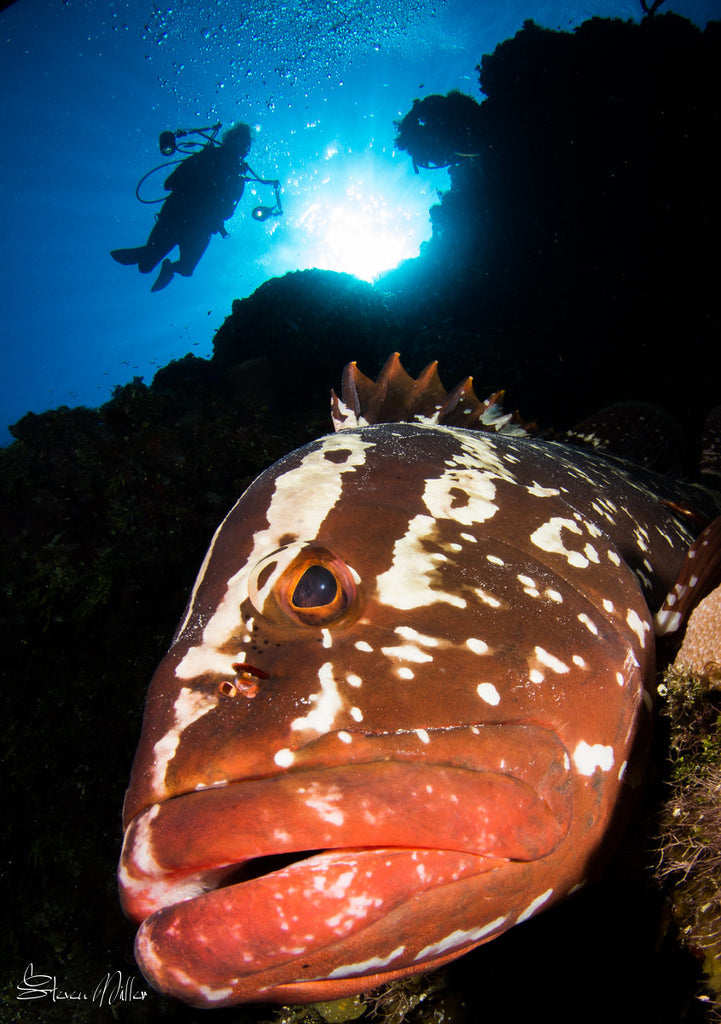
Pro Tip: Waste a Frame
Shoot a test shot and look with a trained eye at the water column. If it is black or super dark, open the lens a stop or two (larger aperture f/number) and try again. If the water column is bright and milky, close down the aperture (smaller f/number).
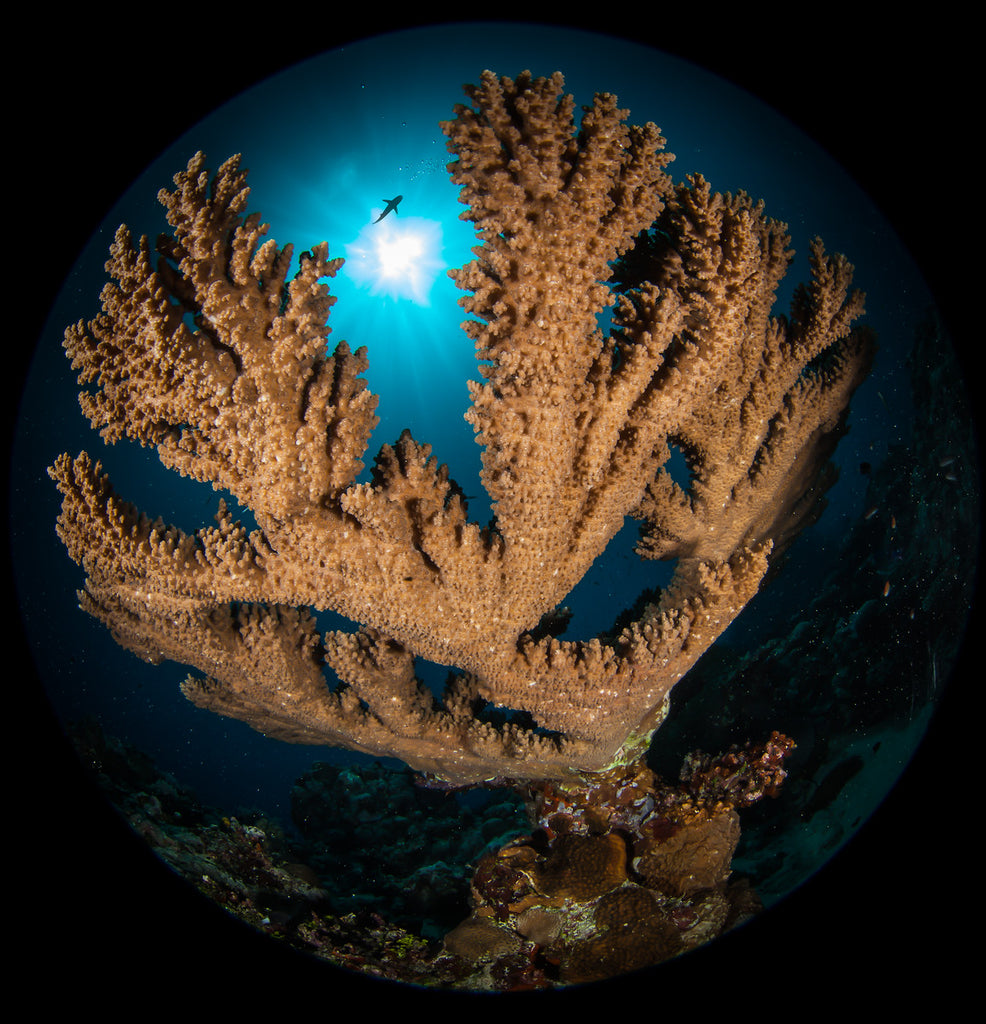
ISO 160 • f/22 • 1/125 • Canon 8-15mm f/4L Fisheye at 8mm
The Sun Ball
You will find the sun shows up in a lot of your images because the lens is so wide, and you are shooting upwards. The aperture value will also control the size of this sun ball. Closing it down makes the ball shrink, opening the aperture up will make the sun ball grow.
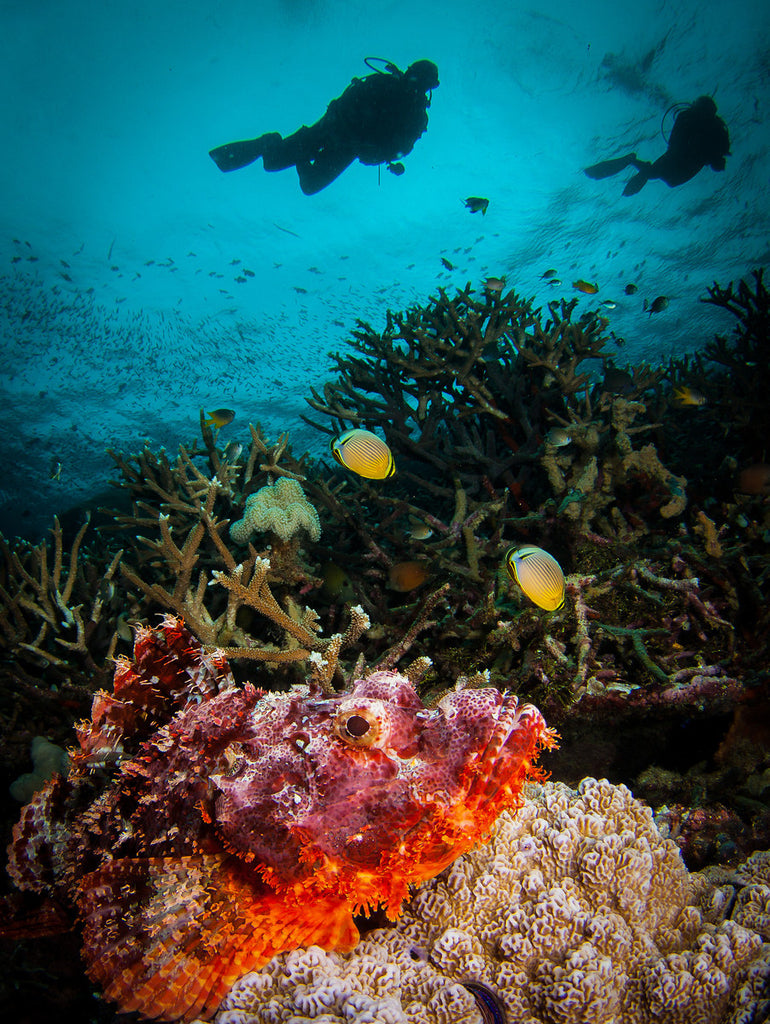
ISO 160 • f/10 • 1/160 • Tokina 10-17mm Fisheye at 10mm
Framing Your Subject
Once you have determined the settings you like you can concentrate on the most important thing... composition! You want your main subject to be only a few inches from the front of the dome. The wide lens will make anything around the edges into a "frame" for your subject; use these shapes to draw the eye to the subject.
Swim up and down the reef looking for an interesting fish or coral formation that will allow you to get very close (but not touching). With a very wide angle lens you can sometimes shoot blind without looking through the viewfinder. Try looking over the top of the housing at the dome to get an idea of your framing.
As you practice you will develop your eye to anticipate the distortion that all wide lenses exhibit. This curvature varies lens to lens, but is always a compositional tool that you will get better with the more you use it.
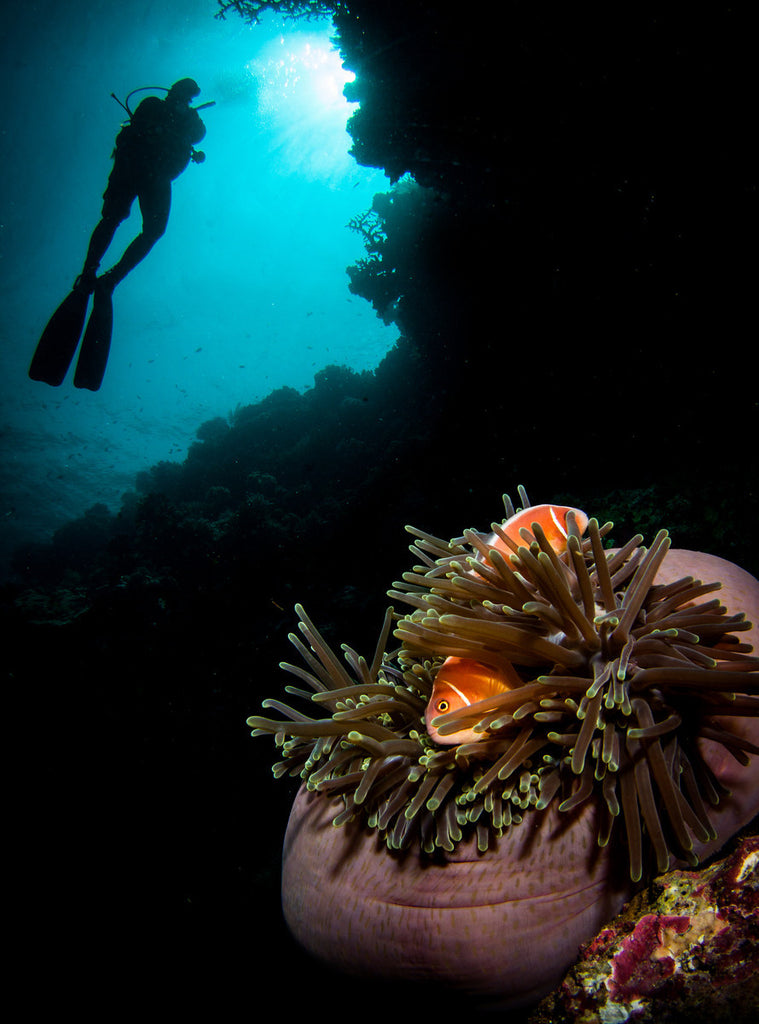
ISO 160 • f/20 • 1/160 • Tokina 10-17mm Fisheye at 10mm
Strobe positioning
Depending on which wide lens you choose, two strobes will be helpful to cover the foreground, but one strobe may suffice (a dome diffuser will help here!). Beware of letting the strobe's flash be seen in the side or corner of your frame.
With fisheye lenses it's easy to accidentally light the water column since your strobes will be so close. This won't be as obvious in your preview screen as it will be once you download your images. Typical flash position would be 10:00 and 2:00 on the clock face. Feel free to move your strobes around to use side lighting and control and create shadows, just make sure to keep them behind the dome.
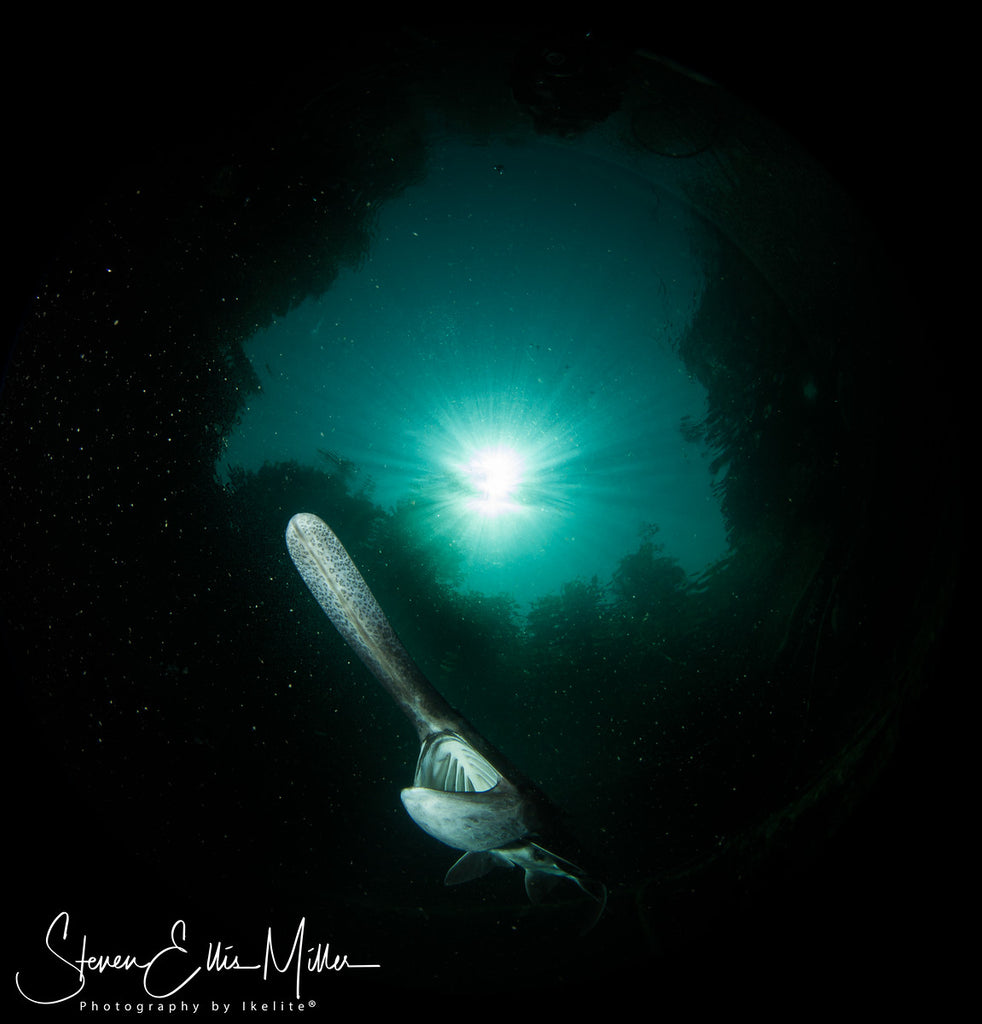
ISO 320 • f/22 • 1/160 • Canon 8-15mm f/4L Fisheye at 8mm
Flash Settings
But we haven't talked about flash settings!! This part is easy: we shoot our cameras on manual, but set the strobes to TTL. When an Ikelite flash goes off, the camera sees it, understands it, and quenches it for the perfect exposure. Manual strobe power settings are available and will work, they just take time away from composition and choosing the correct camera settings.
